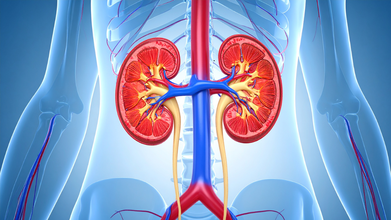- Health Conditions A-Z
- Health & Wellness
- Nutrition
- Fitness
- Health News
- Ayurveda
- Videos
- Medicine A-Z
- Parenting
How to Tell If Your Low Blood Pressure Is Dangerously Low? All On Living With Hypotension

How to Tell If Your Low Blood Pressure Is Dangerously Low? All On Living With Hypotension
Low blood pressure, also known as hypotension, is usually considered a sign of good health and low risk for cardiovascular disease. However, there are times when persistently low blood pressure or a sudden drop can be a sign of an underlying health issue that needs medical attention. Knowing when low blood pressure becomes a problem can help ensure timely intervention and proper care.
Blood pressure readings consist of two numbers:
Systolic pressure (the top number) indicates the pressure in your arteries when your heart pumps blood. Diastolic pressure (the bottom number) reflects the pressure in your arteries while your heart is resting between beats.
The normal reading is usually 120/80 mmHg or less. Hypotension is clinically defined as having blood pressure readings less than 90/60 mmHg. In some patients, low blood pressure will have no adverse health consequences and therefore does not need to be treated. In extreme cases, however, it can limit the flow of oxygen and nutrients to vital organs, resulting in potentially life-threatening complications, such as shock.
Causes of Low Blood Pressure
Hypotension can result from many factors. Some of the factors that cause hypotension are as follows:
- Insufficient fluid intake or excessive fluid loss can lead to decreased blood volume and hence hypotension.
- An injury or internal bleeding may result in hypotension. This happens because blood pressure becomes significantly reduced.
- Some hormonal changes along with the increased blood requirement during pregnancy also causes hypotension.
- Issues like heart failure or arrhythmias can impair blood circulation and result in low blood pressure.
- Certain drugs, including diuretics, antidepressants, and blood-pressure-lowering medications, can induce hypotension.
Symptoms of Hypotension
While low blood pressure may not always cause symptoms, it can sometimes be associated with:
- Dizziness or fainting
- Fatigue and weakness
- Blurred vision
- Nausea
- Confusion or difficulty concentrating
- Shallow breathing
- Palpitations
If the person experiences these symptoms, with the recorded blood pressure reading, the medical services have to be consulted.
Types of Low Blood Pressure
1. Orthostatic Hypotension: This is a kind of hypotension that appears as a result of decreased blood pressure when a person is standing up from lying down or sitting position and primarily affects elderly people.
2. Postprandial Hypotension: This is a drop in blood pressure after eating, more common in older people.
3. Neurally Mediated Hypotension: It is triggered by standing for long periods. This type can affect younger people and is associated with miscommunication between the brain and heart.
When Is Low Blood Pressure Dangerous?
There is no such thing as a universal threshold for very low blood pressure, but a blood pressure reading below 90/60 mmHg can be dangerous and require prompt medical assessment if accompanied by symptoms of fainting, confusion, or shortness of breath. Sudden falls in blood pressure may point to potentially serious underlying causes, which can include:
- Internal bleeding
- Sepsis (severe infection)
- Allergic reactions
Management and Treatment
Treatment of hypotension depends on its cause:
- Hydration Drinking more water can help against dehydration-related hypotension.
- Compression Stockings: These can improve circulation and reduce blood pooling in the lower limbs.
- Dietary Changes: Increasing salt intake under supervision can help increase blood pressure
- Medication Changes: The physician may need to reduce dosages of some medications or replace prescriptions.
For more severe cases, physicians might also administer fludrocortisone or midodrine to increase blood pressure. Shock from hypotension should be treated promptly to ensure proper function of organs.
Can Hypotension Cause Fatigue?
Chronic fatigue syndrome has also been associated with low blood pressure. Prolonged tiredness, despite adequate rest, may require reassessment of blood pressure levels. Fatigue secondary to hypotension will impact functionality and thus requires assessment and treatment of the cause.
When to Seek Medical Care
If your blood pressure readings are low consistently and without symptoms, you probably have nothing to worry about. If you do have symptoms like dizziness, fainting, or confusion, you need to go to the doctor. Blood pressure checks are usually conducted regularly. Once you are aware of your own normal baseline, you will know right away when there is something wrong.
Lifestyle Tips That Support Normal Blood Pressure
- Other than directly treating hypotension, a healthy lifestyle overall would promote balanced blood pressure levels.
- Exercise regularly; it promotes cardiovascular health and can help regulate blood pressure.
- Focus on nutrient-dense foods rich in iron, B vitamins, and electrolytes to support circulatory health.
- Excessive alcohol consumption dehydrates the body and lowers blood pressure.
- Practices like yoga and meditation can help maintain a healthy blood pressure range.
4 Simple Tests That Can Detect Kidney Diseases Early, According To Doctor

Credits: Canva
Kidney disease is rising at an alarming pace worldwide, and it’s now among the top causes of death. A Lancet study highlights that the number of people living with chronic kidney disease jumped from 78 million in 1990 to nearly 788 million in 2023. That’s a massive tenfold spike, and a reminder that our kidneys need more attention than we realize.
The tricky part? Kidney problems often progress silently. Many people don’t realize anything is wrong until the kidneys are already significantly damaged. That’s why experts strongly emphasize early screening. According to nephrologists like Dr Arjun Sabharwal, a few simple tests — often quick and inexpensive — can help catch kidney issues early and improve treatment outcomes.
Below are the four key tests everyone should know about, especially if you have diabetes, high blood pressure, a family history of kidney disease, or you’re simply trying to stay proactive about your health.
Creatinine Blood Test & eGFR: Your First Kidney Health Check
Creatinine is a waste product filtered out by the kidneys. A routine blood test measures its level, but creatinine alone doesn’t tell the full story. That’s where eGFR (Estimated Glomerular Filtration Rate) comes in.eGFR uses creatinine values along with age and other factors to estimate how well your kidneys are functioning overall. Doctors often say, “Creatinine is just a number — eGFR tells you how much your kidneys are working.”
An eGFR below normal may be an early signal that your kidneys aren’t filtering efficiently, even if you feel fine.
Cystatin C: A More Accurate Indicator for Some People
Cystatin C is a protein produced naturally by all cells. When kidneys are healthy, its levels stay stable; when the kidneys struggle, the levels rise.
Experts highlight that Cystatin C can be more reliable than creatinine for people with very high muscle mass, those who work out intensely, or individuals taking supplements that may affect creatinine readings. If creatinine results seem unclear or inconsistent, this test adds clarity.
Urine Dipstick Test: Quick and Tells You a Lot
Before kidney function takes a major hit, the body often shows early warnings — one of which is protein leakage in urine. A urine dipstick test is one of the fastest ways to detect this.
A chemically treated strip is dipped into your urine sample, and if proteins like albumin are present, the strip changes color. It’s simple, non-invasive, and helpful for spotting early kidney damage.
Urine Protein-to-Creatinine Ratio (UPCR): How Much Protein Is Leaking
If a dipstick shows abnormalities, the next step is often a UPCR test. This test measures exactly how much protein is leaking into the urine relative to creatinine. Higher levels may signal worsening kidney function or underlying disease. Doctors use UPCR to assess the severity of kidney damage and monitor progress over time.
When to See a Nephrologist
If any test shows rising creatinine, an abnormal eGFR, protein in urine, or blood detected on a dipstick, it’s crucial to book an appointment. Lifestyle tweaks, home remedies, or detox drinks cannot reverse kidney damage. Expert evaluation is essential.
Top 5 Infectious Diseases That Disrupted Healthcare System Worldwide In 2025

Credits: Canva
In 2025, thanks to climate change, rapid urbanization, and frequent travels, new viruses, their strains, and infections have spread frequently. Infections have affect millions and some diseases have come back with their new strains, which have been more contagious, whereas other diseases are finding new ways to emerge.
As we look back at the year, which is about to end in just another month, let us look back at the top 5 infectious diseases of 2025.
Respiratory Infections
In 2025, respiratory infections were the most widespread, with new COVID-19 variants emerging every now and then. Along with this common flu too has emerged. This has weakened immunity and made elderly and infants, and people with comorbidities more vulnerable to the diseases.
The new COVID variants in India are linked with the JN.1 variant and its sub-variants like LF.7 and NB.1.8. The COVID variants in the UK which were active were XFG, NB.1.8.1, or known as the Stratus and Nimbus variants. Other variants were XFG.3, XFG.5, and XFG.3.4.1.
Tuberculosis (TB)
Tuberculosis still continues to be a major infectious disease in 2025, especially in countries like India. As per the World Health Organization (WHO), tuberculosis caused 1.25 billion deaths in 2023. It becomes the world's leading infectious disease after COVID-19.
Each day, close to 3,425 people lose their lives to TB, and close to 30,000 people fall ill with this preventable and curable disease. About 10.8 million people got TB in 2023, which include 6 million, 3.6 million women, and 1.3 million children.
Dengue and other mosquito-borne infections
Mosquito-borne diseases like dengue, chikungunya, malaria, and Zika continued to rise in 2025. The reason being changing weather patterns. Dr Sanjeev Bagai, Chairman of Nephron Clinic, and Senior Consultant Pediatrician and Nephrologist points out that earlier the mosquito-borne diseases were seasonal, however, due to rapid urbanization and climate changes, these diseases have stayed all round the year.
Hepatitis Infections
Hepatitis B and Hepatitis C are among the most common Hepatitis infections in 2025. However, there have been outbreaks of Hepatitis A and E in unsafe water and food. Chronic hepatitis can also damage liver and also lead to cancer. It is a concern because it spreads through contaminated food, unsafe water, blood, and sexual contact. While many people may not show symptoms until serious liver damage occurs.
Symptoms also include jaundice, dark urine, fatigue, nausea, and abdominal pain.
Gastrointestinal Infections
Food- and water-borne infections are still common across the world. Illnesses like salmonella, cholera, rotavirus, and norovirus often spread in areas where hygiene, sanitation, and food safety are poorly maintained.
Why are these infections risky?
They can spread extremely fast, especially among children and older adults. Severe diarrhea and vomiting can lead to dangerous dehydration if not treated in time.
What symptoms should you look out for?
Persistent diarrhea, vomiting, stomach cramps, fever, and signs of dehydration. The best prevention is simple: drink clean water, wash hands regularly, and eat properly cooked food.
Cancer Risk and Your DNA: What’s Hereditary and What’s Not?

(Credit-Canva)
When we think about cancer risk, it’s natural to wonder, “is it genetic?”
The truth is, sometimes it is, but in many cases, cancer develops from a mix of lifestyle, environmental factors, and DNA changes that occur over a lifetime. Understanding the difference between inherited genetic risks and those acquired along the way can help people make smarter decisions about screening, prevention, and treatment, and empower families to take proactive steps for their health.
Inherited genes or life choices?
Cancer arises from a series of changes/mutations in cells that disrupt normal growth control. Many of these changes happen over a person’s lifetime, influenced by exposures (like tobacco, UV rays, infections), aging, and random DNA errors. These are called “somatic mutations” and occur in our tissues—they are not inherited, and are not passed to children.
By contrast, a smaller fraction of cancers are influenced by inherited mutations called “germline mutations”; these are changes in the DNA that you are born with, and are present in every cell of your body. These mutations can predispose someone to cancer by impairing DNA repair, controlling cell division, or through other mechanisms. Approximately 5–10% of all cancers are thought to have a strong hereditary component.
So, while your DNA can influence your cancer risk, most cancers don’t occur because of an inherited gene defect. And even when a germline mutation is present, environment, lifestyle, and chance usually play significant roles in whether cancer actually develops.
Recognizing hereditary cancer syndromes
When should we suspect hereditary cancers? Here are red flags:
A strong family history of cancer, especially the same type (e.g. multiple members with breast cancer, or several relatives with colon cancer).
- Early-onset cancer, e.g. diagnosis before the age of 50 or 40 years.
- Multiple primary cancers in the same person (e.g., ovarian + breast).
Rare cancers or specific tumor types tied to known syndromes (e.g. medullary thyroid cancer, male breast cancer, pancreatic cancer in some families).
Known syndrome features, such as colon polyps and colon cancer in Lynch syndrome.
In such cases, genetic testing can identify mutations in genes like BRCA1/2, Lynch syndrome genes (MLH1, MSH2, MSH6, PMS2, EPCAM), TP53, PALB2, and others. Identifying carriers has implications for targeted screening (e.g. colonoscopic surveillance or mammography at regular intervals), preventive surgery like mastectomy, and sometimes therapy in case cancer does develop.
How do hereditary mutations lead to cancer?
Imagine your cells are factories, following a strict set of instructions (your DNA). Inherited mutations can mean that a “safety check” is broken from the start. For example:
A mutation in the BRCA1 or BRCA2 genes weakens the cell’s ability to repair DNA. Over time, unrepaired damage accumulates, raising the risk of developing breast, ovarian, prostate, and pancreatic cancer.
Mutations in DNA mismatch repair genes (as in Lynch syndrome) allow errors during DNA copying to persist, boosting mutation load and increasing the risk of developing colon, endometrium, stomach, and other cancers.
But even when a high-risk mutation is present, cancer doesn’t appear overnight. Additional “hits”, or more mutations, microenvironment changes, hormonal exposures, or lifestyle factors need to typically accumulate before cells turn cancerous.
Why does hereditary information matter?
You might ask: if it’s a small percentage of cancers, does knowing about hereditary risk make a difference?
The answer is, yes, absolutely. Knowing your hereditary risk of cancer has some important benefits:
Prevention & early detection: If you carry a pathogenic mutation, you can undergo more frequent surveillance, chemoprevention (e.g. tamoxifen for breast cancer), or risk-reducing surgeries (e.g. prophylactic mastectomy or oophorectomy).
Therapeutic choices: Certain inherited mutations also influence how cancers respond to therapy. For example, PARP inhibitors are effective in tumors with BRCA-related homologous recombination deficiency (HRD). Thus, knowing that a patient has a germline BRCA mutation may alter drug selection.
Family risk & cascade testing: Identifying a hereditary mutation allows cascade testing, where close relatives can also get genetic testing done. This helps them understand risks and take prevention measures before cancer develops.
Clinical trial access: Many modern trials require knowledge of inherited DNA defects. Patients with known germline mutations may qualify for therapies designed precisely for those DNA repair vulnerabilities.
However, it is also important to understand that absence of a germline mutation does not mean absence of risk. Many cancers are driven purely by somatic mutations, and many hereditary variants remain undiscovered or classified as Variants of Uncertain Significance (VUS). Testing negative for known genes does not guarantee immunity.
Also, hereditary risk is not absolute: a person may carry a mutation but never develop cancer, due to protective factors like healthy lifestyle, background genetics, or luck. Interpretation must be done thoughtfully, ideally with genetic counselling.
Conclusion
The relationship between cancer risk and our DNA is not simple.While hereditary mutations play a role in a minority of cases, their impact on prevention, therapy, and family planning can be profound. Knowing whether cancer “came from your DNA” is often less important than using that knowledge wisely—both for patients and their relatives.
As we move deeper into the era of precision medicine, clinicians and patients alike should appreciate that hereditary and somatic worlds coexist, and that DNA insight is a tool—not a verdict.
© 2024 Bennett, Coleman & Company Limited

